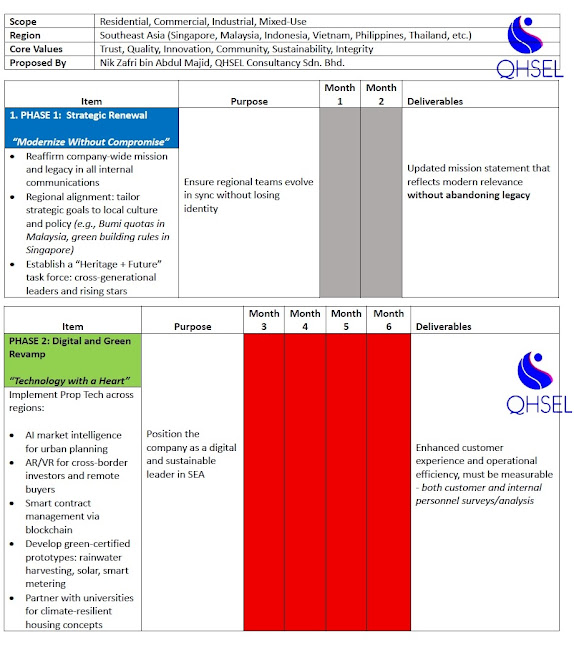These are insights I’ve gathered over the last 30 years through experience and observation. When I first wrote this in 1999, there were 14 points but I’ve since summarize them into 9 core qualities, refined to suit 2025 and beyond. I’ve made them clear, memorable, and practical for everyday leadership.
It's my version of "Leadership" module
Of course, it shouldn’t take you another 30 years to apply them. Who knows, your leadership journey might just begin today.
1) KNOWLEDGABLE
A good leader must possess strong domain knowledge and be well-informed about the industry, current trends, and the specifics of the organization. This includes:
- Technical expertise and decision-making frameworks,
- Understanding the roles and responsibilities of the team,
- Being aware of external factors like market forces, regulations, and competitors.
- Staying updated through continuous learning, training, and reading.
Why it matters: A knowledgeable leader earns respect, gives informed direction, and avoids costly mistakes.
2) DO THE RIGHT THING
Integrity and ethics are non-negotiable traits of leadership. - Stand for principles even when it’s hard or unpopular,
- Uphold fairness, transparency, and accountability,
- Be a role model in behavior, honesty, and consistency, lead by example
Why it matters: People follow leaders they trust. Doing the right thing builds long-term loyalty and credibility.
3) HEAD TO THE RIGHT DIRECTION
Leadership is about setting and aligning everyone with a clear vision.
- Set logical, measurable and achievable goals based on strategic foresight,
- Align the team’s work with the organization’s mission and values.
- Periodically reassess the path to ensure relevance.
Why it matters: A leader without direction leads a team to confusion. Purposeful direction gives clarity and unity.
4) WORK HARDER
Effort and commitment are infectious.- Show dedication and passion through your work ethic.
- Don’t shy away from getting your hands dirty when needed.
- Be willing to put in the extra time to support your team or resolve crisis.
Why it matters: Hardworking leaders inspire their teams to rise above mediocrity and follow by example.
5) THINK OF NEW WAYS
If you're a seasoned professional, you may need to work with the younger generation. Innovation keeps the organization relevant and competitive.
- Be open to change and embrace creative thinking,
- Encourage brainstorming and experimentation without fear of failure (should you fail, do it again),
- Look for improvements in processes, products, and people development.
Why it matters: Stagnation is the enemy of progress. Leaders must innovate to adapt and thrive.
6) MAKE THE BEST DECISION
Not a popular decision, but the best decision- Decision-making is at the heart of leadership,
- Base your choices on facts, resources, data, experience, and intuition,
- Involve stakeholders when appropriate, but take responsibility and to be accountable,
- Balance risks and rewards with long-term implications in mind.
Why it matters: The ability to make timely, sound decisions determines whether a team succeeds or struggles.
7) BUSINESS SUSTAINABILITY
Leadership must consider long-term viability, not just short-term gains.- Balance economic success with environmental and social responsibility (ESG),
- Invest in people, processes, and technologies that support sustainable growth.
- Make ethical decisions that preserve reputation and resources.
Why it matters: Sustainability ensures your organization endures and thrives in an ever-changing world.
8) BE A GOOD LISTENER
Effective communication starts with listening.
Practice active listening, seek to understand, not just to respond,Show genuine empathy and openness to different views and feedback,Use listening as a tool to detect problems early and build trust.
Why it matters: People feel valued and motivated when they are heard. It improves morale, loyalty, and problem-solving. (AND always reward good ideas)
9) CONTINUAL IMPROVEMENT
Strive for excellence, not perfection.
Promote a culture where learning and improvement are continuous,Encourage reflection, feedback, and growth - personally and organizationally,Invest in upskilling, process optimization, and quality enhancement.
Why it matters: In a rapidly evolving world, continuous improvement is necessary to stay competitive and agile.
CONCLUSION
"The impact of doing something is FAR more greater than doing nothing at all" - Nik Zafri
"True leadership is not about authority, it's about responsibility, humility, and vision" - Nik Zafri
- Technical expertise and decision-making frameworks,
- Understanding the roles and responsibilities of the team,
- Being aware of external factors like market forces, regulations, and competitors.
- Staying updated through continuous learning, training, and reading.
Why it matters: A knowledgeable leader earns respect, gives informed direction, and avoids costly mistakes.
2) DO THE RIGHT THING
- Stand for principles even when it’s hard or unpopular,
- Uphold fairness, transparency, and accountability,
- Be a role model in behavior, honesty, and consistency, lead by example
- Set logical, measurable and achievable goals based on strategic foresight,
- Align the team’s work with the organization’s mission and values.
- Periodically reassess the path to ensure relevance.
- Show dedication and passion through your work ethic.
- Don’t shy away from getting your hands dirty when needed.
- Be willing to put in the extra time to support your team or resolve crisis.
If you're a seasoned professional, you may need to work with the younger generation. Innovation keeps the organization relevant and competitive.
- Be open to change and embrace creative thinking,
- Encourage brainstorming and experimentation without fear of failure (should you fail, do it again),
- Look for improvements in processes, products, and people development.
- Decision-making is at the heart of leadership,
- Base your choices on facts, resources, data, experience, and intuition,
- Involve stakeholders when appropriate, but take responsibility and to be accountable,
- Balance risks and rewards with long-term implications in mind.
- Balance economic success with environmental and social responsibility (ESG),
- Invest in people, processes, and technologies that support sustainable growth.
- Make ethical decisions that preserve reputation and resources.
9) CONTINUAL IMPROVEMENT
t.
t.


















